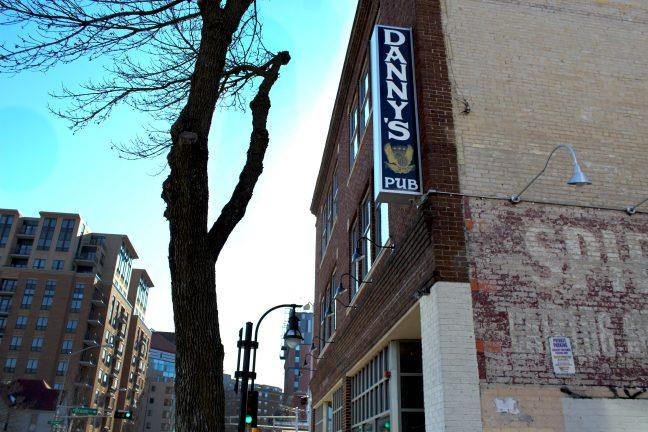Growing up on the East Coast in a Jewish home, Seinfeld often felt like my family’s holiest relic. It brought my jaded ex-New Yorker parents, my angsty teenage brothers and me together for the only peaceful 30 minutes of our day. And although it was a farce, to me, a young, impressionable jewess, it seemed like a gleaming paradigm of what real life was like. It was so relatable. Whenever we witnessed someone double-dip a chip, or the person in front of us in line bought the last marble rye or we came across a truly heinous dancer, we were reminded of our favorite sitcom.
“All of life’s situations have been anticipated by Seinfeld,” my mother would say.
Jerry Seinfeld’s self-proclaimed “show about nothing” taught me about life’s more uncomfortable social situations. I learned these lessons through the pitfalls of each character’s narcissism, greed and self-deprecation, and I always felt oddly akin to their dilemmas. I have always dreamed of sharing the same air space as Jerry Seinfeld. On January 9 at the Overture Center, it finally happened. In my imaginary encounter, I pictured myself more as Elaine Benes, getting kicked out of Chinese restaurants and going on reconnaissance missions to discern whether Teri Hatcher’s boobs are real or not.
Alas Friday night’s stand up show felt just as surreal, like being dropped in the middle of a Seinfeld episode or back into my personal world of social anxieties and airing grievances. Seinfeld emulated the tone of his sitcom, while leaving the more exceptional farcical elements behind. The show was honest, equal parts self-deprecating and antagonistic and consistently relatable.
No topic was off limits. He scaled the spectrum of daily minutia, converting blasé topics like coffee’s effects on the body into a hilarious metaphor about a pissed off new boss unhappy with the way things are run. Seinfeld spoke as an equal opportunity satirist, giving dichotomous issues an equal weight of cynicism. He gave just as much flack to Ambien users and the sleep number bed that he gave to coffee crazes and energy drinks. He poked fun at contemporary attachments to smartphones before launching into a rebuke on antiquated answering machine messages.
Seinfeld was unafraid to engage with potentially raunchy topics, but he was careful to keep them clean and tasteful. He even approached a bit on toilet stalls with a careful air of delicacy. Instead of regressing to lewd language, he relied more on the content and delivery of the joke than the shock value of his words.
In an interview with the Guardian, Seinfeld said he would spend months honing his act by showing up to small comedy clubs in the New York Area unannounced to refine his act little by little. He told the Guardian that he thinks of himself as a sportsman working continually a single set of skills and his performance experience quickly became evident.
https://www.youtube.com/watch?v=Fn1vpGDb3Ss
However the show did not feel overly rehearsed and lifeless. There was an element of candor that made him all the more relatable. After introducing his first bit about an elusive idea he called “simultaneous, synchronized married couple exit” he took a not-so-brief pause to admonish a woman in the front row for holding up a sign asking for an autograph for her husband. He kept his diatribe light but unwavering.
“You’re living in a front row of magic here,” he said. “You’re not special, you’re out of your mind.”
He seized the ridiculous situation and transformed it into another bit. After coming back from his tangent, he explained he could no longer tell the “simultaneous synchronized married couple exit” bit because the timing was off. Just a few moments later, he asked for audience input and someone yelled, “Cheese curds.” He responded with a sense of New York snobbery, claiming how disgustingly unappetizing cheese curds sound.
But perhaps the most impressive element of his act was how visual it was. He skipped, he flailed and he lowered himself to the ground when personifying a dying cellphone. He was very physically engaging, but he also created a lot of mental imagery through metaphors and stories. He painted a picture of those Cialis ads with the two hot tubs and explained the degrading nature of Viagra commercials by discussing how Clydesdales wrenching a car from a rut is a horrible metaphor for erectile dysfunction. The whole show was so vivid, each joke solicited that visceral reaction of “Oh my God, it’s so true.”
In my time with Seinfeld, I was neither playing the role of Elaine Benes nor was I in Seinfeld’s iconic Manhattan apartment. But I still felt a strong sense of intimacy and commonality with the show. I was transported to those calm moments huddled around my parent’s T.V. watching my everyday idols take on life’s most serious issues– like when your girlfriend has man hands or when you are forced to wear a puffy shirt on television. Classic.













